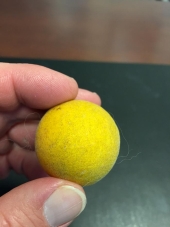




Enjoys simplicity, even though the rest of the world isn't so simple.
 3
3








Iterations are fine, we don't have to be perfect
My 2nd Location:Florida HardinessZone:10 AHS:10 GDD:8500 Rainfall:2in/mth winter, 8in/mth summer, Soil:Sand pH8 Flat
 1
1




"We're all just walking each other home." -Ram Dass
"Be a lamp, or a lifeboat, or a ladder."-Rumi
"It's all one song!" -Neil Young
 1
1








Enjoys simplicity, even though the rest of the world isn't so simple.
 1
1




Yes, I'm that David The Good. My books are here: http://amzn.to/2kYcCKp. My daily site is here http://www.thesurvivalgardener.com and my awesome videos are here https://www.youtube.com/subscription_center?add_user=davidthegood




Enjoys simplicity, even though the rest of the world isn't so simple.
 2
2








 1
1




Living in Anjou , France,
For the many not for the few
http://www.permies.com/t/80/31583/projects/Permie-Pennies-France#330873
 1
1




Marianne
check us out @ www.cricketscove.net




David Livingston wrote:Anyone got any seeds they would be willing to send me in return for ? ...........
I live in France and love marmalade but the bitter sevile oranges used traditionally to make English and scottish marmalade will not grow here
David
"A society grows great when old men plant trees whose shade they know they shall never sit in."
 1
1




There is nothing permanent in a culture dependent on such temporaries as civilization.
www.feralfarmagroforestry.com




Enjoys simplicity, even though the rest of the world isn't so simple.




 1
1




 1
1




Check out Redhawk's soil series: https://permies.com/wiki/redhawk-soil





 3
3








 1
1




Pecan Media: food forestry and forest garden ebooks
Now available: The Native Persimmon (centennial edition)

 1
1




Joe Grand wrote:Cris Bessette,
Do you have a problem with the seedlings take over, I have heard that it is invasive plant, but I have had it for several years & it has not spread at all.
I was wondering if anyone else had a problem?
Can you share a recipe with us, thank you.




Cris Bessette wrote:
As for the taste, trifoliate orange jelly tastes like a mix of lemon and gin.
Pecan Media: food forestry and forest garden ebooks
Now available: The Native Persimmon (centennial edition)














Iterations are fine, we don't have to be perfect
My 2nd Location:Florida HardinessZone:10 AHS:10 GDD:8500 Rainfall:2in/mth winter, 8in/mth summer, Soil:Sand pH8 Flat

|
Switching from electric heat to a rocket mass heater reduces your carbon footprint as much as parking 7 cars. Tiny ad:
The new permaculture playing cards kickstarter is now live!
https://www.kickstarter.com/projects/paulwheaton/garden-cards
|







